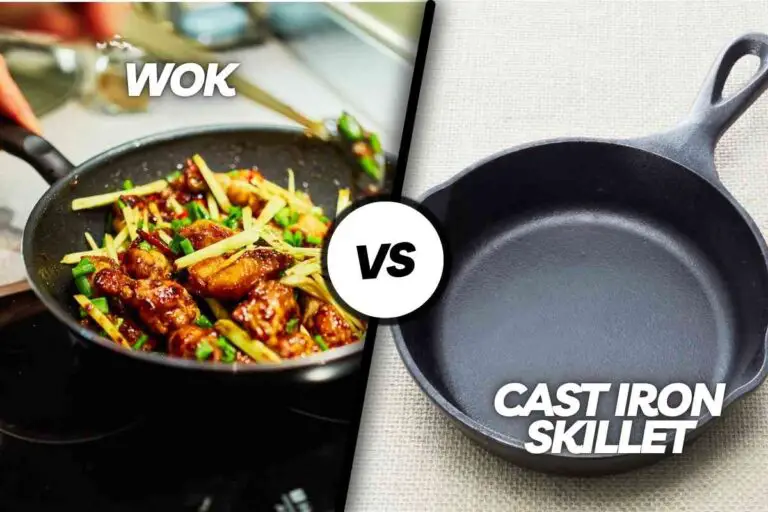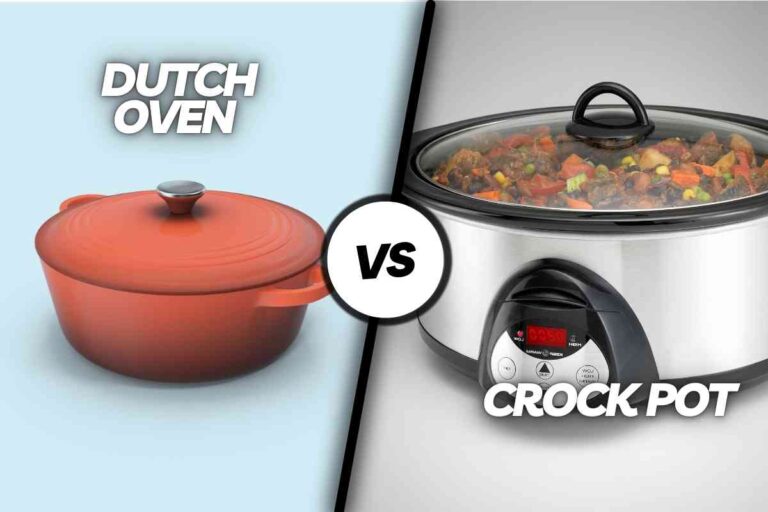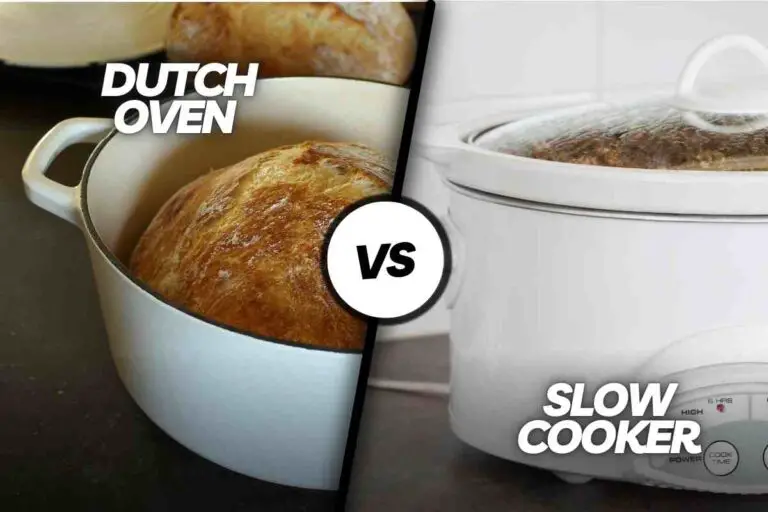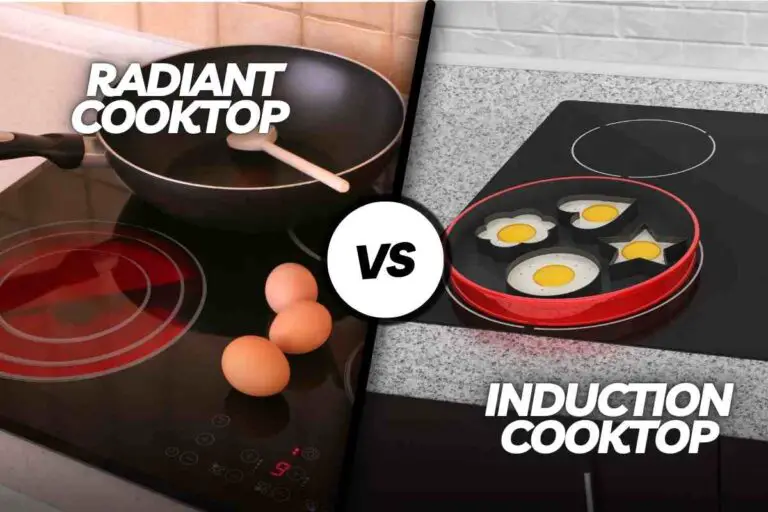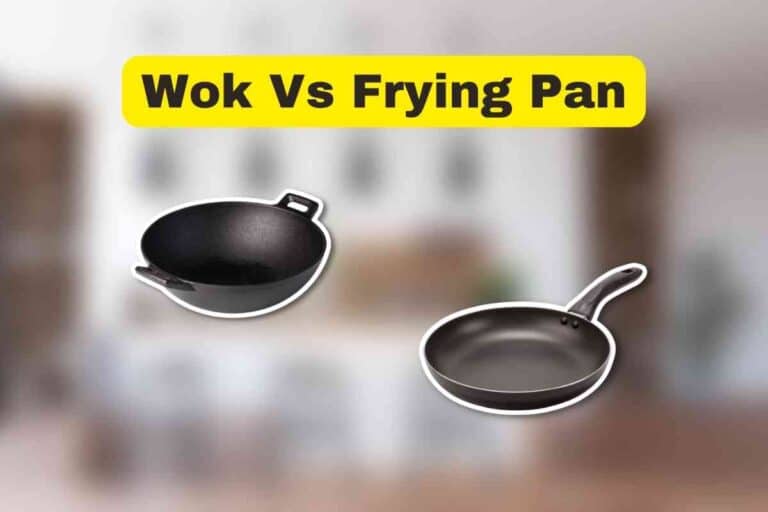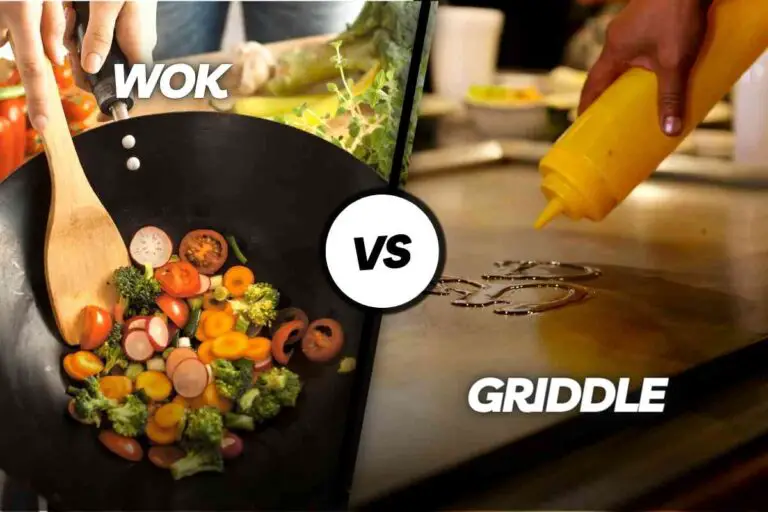Cast Iron Dutch Oven Vs Stainless Steel Pot
The main difference between a Cast Iron Dutch Oven and a Stainless Steel Pot lies in their construction and cooking capabilities.
Cast Iron Dutch Ovens are typically made of heavy materials like enameled or bare cast iron, offering excellent heat control for long braises and superior cooking performance.
On the other hand, Stainless Steel Pots are constructed from lighter materials such as stainless steel and aluminum, featuring thinner walls overall, especially compared to the thicker walls and bottoms of Dutch ovens.
These differences affect their cooking versatility and suitability for various culinary applications.
Comparison Table of Cast Iron Dutch Oven Vs Stainless Steel Pot
| Feature | Cast Iron Dutch Oven | Stainless Steel Pot |
|---|---|---|
| Heat Retention | Excellent | Good |
| Heat Conductivity | Even and slow | Quick and even |
| Versatility | Versatile | Suitable for quick cooking |
| Cleaning | Requires care | Easier maintenance |
| Durability | Long-lasting | Moderate lifespan |
| Aesthetic | Rustic charm | Modern and sleek |
| Safety | Concerns about iron leaching | Generally safe |
Key Takeaways
- Heat Retention vs. Quick Cooking: Cast Iron Dutch Ovens excel in heat retention, making them perfect for slow cooking and dishes that benefit from even, steady heat. Stainless Steel Pots heat up quickly and are great for recipes that require fast cooking.
- Versatility vs. Specialization: Dutch Ovens are highly versatile and can handle a wide range of cooking styles, from braising to baking. Stainless Steel Pots are better suited for specific tasks, particularly those that involve rapid cooking.
- Maintenance and Durability: Dutch Ovens, especially those with enamel coating, require more attention to cleaning but are known for their long-lasting durability. Stainless Steel Pots are easier to maintain but may have a more limited lifespan.
- Aesthetic and Cooking Style: Consider your kitchen’s aesthetic and your preferred cooking style. Cast Iron Dutch Ovens bring a rustic charm, while Stainless Steel Pots offer a modern look. Your choice should align with your kitchen’s ambiance and your culinary preferences.
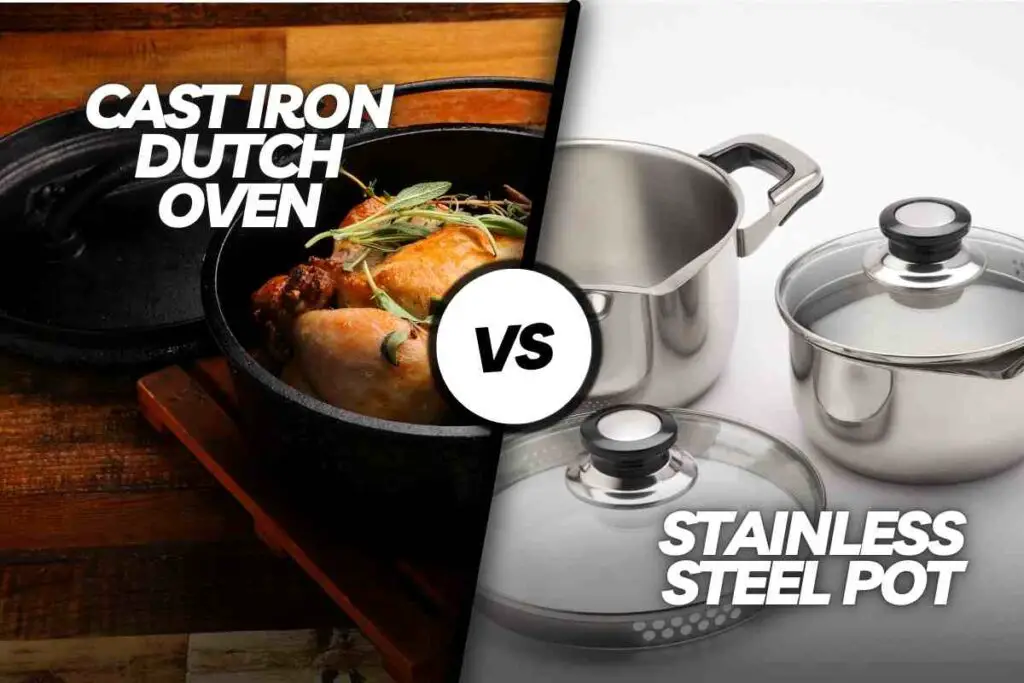
Can You Use a Stainless Steel Pot as a Dutch Oven?
Yes, a stainless steel pot can be used as a Dutch oven, but it may not perform as well as a traditional cast iron Dutch oven.
Stainless steel pots are known for their durability, resistance to rust and corrosion, and even heat distribution.
However, they may not retain heat as well as cast iron, which can affect cooking times and overall performance.
It’s also important to make sure the stainless steel pot has a tight-fitting lid to allow for proper braising and slow-cooking techniques commonly used with Dutch ovens.
Materials and Construction
Cast Iron Dutch Oven:
- Made from either seasoned or enamel-coated cast iron.
- Embraces tradition with its rustic charm.
- Time-tested and known for its durability.
Stainless Steel Pot:
- Crafted from stainless steel with around 11 percent chromium content.
- Aesthetically modern and sleek.
- Brings a contemporary touch to your kitchen.
Winner: It’s a tie! Your choice depends on your style preference.
Heat Conductivity and Retention
Cast Iron Dutch Oven:
- Excels in heat retention and distribution.
- Ideal for slow cooking, searing, and baking.
- A real workhorse in the kitchen.
Stainless Steel Pot:
- Heats up quickly but doesn’t hold onto that heat as effectively.
- Best suited for faster cooking methods.
Winner: Cast Iron Dutch Oven takes the crown for its exceptional heat retention.
Cooking Versatility
Cast Iron Dutch Oven:
- A master of versatility, handling various cooking styles with ease.
- From stews to roasts, it’s your all-in-one kitchen companion.
Stainless Steel Pot:
- Best for dishes that require quick cooking.
- Not as adaptable for slow-cooked masterpieces.
Winner: Cast Iron Dutch Oven, the king of versatility.
Cleaning and Maintenance
Cast Iron Dutch Oven:
- Can be a bit demanding when it comes to cleaning.
- Enamel-coated ones are easier to maintain.
Stainless Steel Pot:
- Fairly easy to clean but can become a challenge after high-temperature cooking.
Winner: Enamel-coated Cast Iron Dutch Oven for easier maintenance.
Safety Considerations
Cast Iron Dutch Oven:
- Concerns about dietary iron leaching into food.
- Seasoned cast iron may require proper care to avoid rust.
Stainless Steel Pot:
- Generally safe as it doesn’t react with foods.
- A reliable choice in terms of safety.
Winner: Stainless Steel Pot for its food-safe reputation.
Comparison Chart
Let’s sum it up in a quick comparison:
| Aspect | Cast Iron Dutch Oven | Stainless Steel Pot |
|---|---|---|
| Heat Retention | Excellent | Good |
| Cooking Versatility | Highly versatile | Best for faster cooking |
| Cleaning and Maintenance | Requires care | Easier maintenance |
| Safety | Concerns about iron | Generally safe |
Winner: Cast Iron Dutch Oven for its overall performance.
Frequently Asked Questions (FAQs)
Are Stainless Steel Dutch Ovens Ovenproof?
Check the handles and lid hook for suitability before using them in the oven.
Are There Dutch Ovens Made from Stainless Steel?
Yes, they exist and go by different names.
What’s the Best Material for a Dutch Oven for Versatile Cooking?
Cast iron or enamel-coated cast iron is your best bet.
Conclusion
In the battle of the kitchen titans, the Cast Iron Dutch Oven emerges as the victor for its exceptional heat retention, versatility, and timeless charm. While the Stainless Steel Pot offers convenience and a modern aesthetic, the Dutch oven’s ability to handle a wide range of cooking styles makes it a worthy investment.
Price differences are often negligible, so if you’re looking for cookware that can do it all, consider adding a cast iron Dutch oven to your kitchen arsenal.
Remember, the best tool is the one that suits your cooking needs and preferences. So, go ahead, equip your kitchen, and let your culinary creativity flourish with the right cookware by your side.

